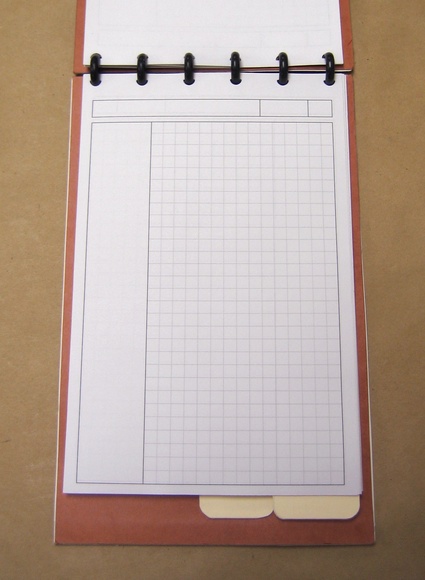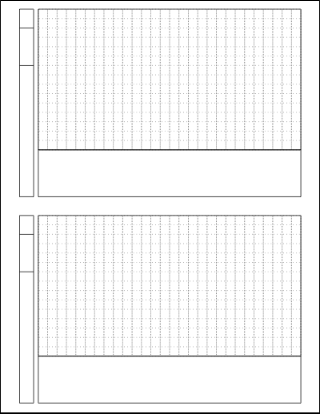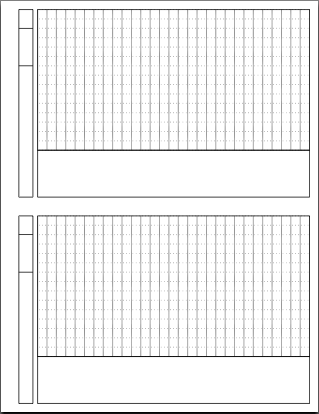New Circa/Rolla steno notebook
May 9, 2011 at 10:26 PM by Dr. Drang
A few years ago I made a steno-style notebook with Circa/Rolla disks. It’s worked out really well, but the cardboard covers are looking a little beat up from field use. So today I made a new one using plastic covers. It doesn’t have the rustic look of the old one, and I had to modify one of my planner insert designs, but it took no time at all to make.
My old steno notebook uses 5½ × 8½ paper—letter-sized paper cut in two—and is bound at the top with six disks.

The advantage of this for field use is that the binding doesn’t get in the way of your writing hand the way it does in a standard, side-bound notebook.
Levenger used to make a Circa steno notebook, but it seems to have disappeared from the web site. Probably not a big seller. So premade steno covers aren’t available anymore. I took a pair of Rolla letter-sized covers, turned them sideways, and cut them to a 6″ width.

Filled with paper, this makes a nice little notebook. The template I use for the paper is based on Cornell note paper, but doesn’t have the summary section at the bottom.

The plastic covers aren’t quite as stiff as the thicker cardboard ones, but they’re stiff enough to write on, especially when the top cover is flipped around to the back.
One problem is that the covers are only 8½″ long—the same length as a letter-sized sheet cut in half. To keep the paper clean, I needed to redesign my notebook paper grid to be ¼″ shorter.

This turned out to be pretty simple. The PDF I use for top-bound notebook paper is generated from a hand-written PostScript file1, so all I had to do was change four lines, one of which was a comment. The new page looks like this when printed

instead of this

After printing on letter-sized paper, I cut the paper in half, then slice ¼″ off the bottom and punch the mushroom holes in the top.
The GitHub repository that holds all my notebook paper templates now has four designs:
- Letter-sized paper (8½ × 11) with side binding margins. These are the files with names that start with
notes-letter. - Junior-sized paper (5½ × 8¼) with side binding margins. These are the files with names that start with
notes-junior. - Junior-sized paper (5½ × 8½) with top binding margins. These are the files with names that start with
notes-topbinding. - Slightly shorter junior-sized paper (5½ × 8¼) with top binding margins (this is the new one). These are the files with names that start with
notes-topbinding-short.
If you’re interested in these paper designs, the repository includes the generated PDFs, so you don’t have to know anything about PostScript programming to download and use them.
-
Yeah, I write my own PostScript code. Doesn’t everyone? ↩

